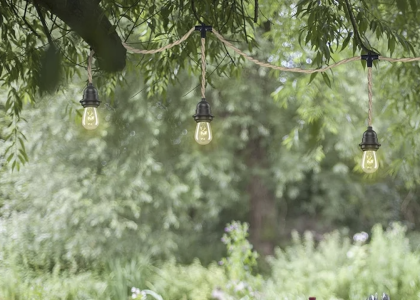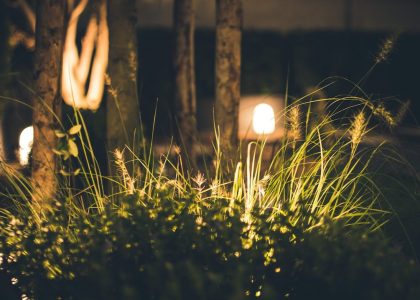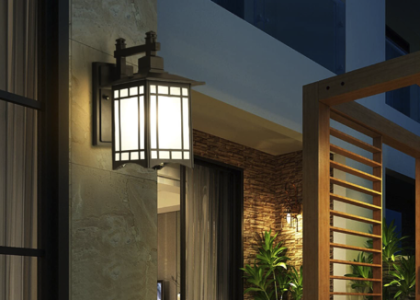Pathway LED lights have emerged as a popular choice for illuminating outdoor spaces, particularly gardens and walkways. These lights are designed to enhance visibility and safety while adding an aesthetic appeal to the landscape. Unlike traditional incandescent or halogen lights, LED technology offers a more energy-efficient solution, consuming significantly less power while providing brighter illumination.
The versatility of pathway LED lights allows them to be used in various settings, from residential gardens to commercial landscapes, making them an essential component of modern outdoor design. The evolution of lighting technology has led to the widespread adoption of LED fixtures due to their longevity and low maintenance requirements. Pathway LED lights are available in a myriad of styles, colors, and brightness levels, allowing homeowners and landscape designers to create customized lighting schemes that complement the natural beauty of their gardens.
As outdoor living spaces become increasingly popular, the demand for effective and attractive lighting solutions continues to grow, positioning pathway LED lights as a key element in enhancing the overall ambiance of outdoor environments.
Benefits of Using Pathway LED Lights in Your Garden
One of the primary benefits of using pathway LED lights in your garden is their energy efficiency. Traditional lighting options often consume a significant amount of electricity, leading to higher utility bills. In contrast, LED lights use up to 80% less energy than incandescent bulbs, making them an environmentally friendly choice.
This reduction in energy consumption not only lowers costs but also contributes to a decrease in carbon emissions, aligning with sustainable living practices that many homeowners are now prioritizing. In addition to their energy efficiency, pathway LED lights offer exceptional durability and longevity. Most LED fixtures have a lifespan of 25,000 hours or more, which means they can last for years without needing replacement.
This longevity translates into lower maintenance costs and less frequent replacements, making them a cost-effective solution over time. Furthermore, many LED lights are constructed with weather-resistant materials, ensuring they can withstand the elements without deteriorating. This resilience makes them ideal for outdoor use, where exposure to rain, snow, and varying temperatures can take a toll on less durable lighting options.
Choosing the Right Pathway LED Lights for Your Garden
Selecting the appropriate pathway LED lights for your garden involves considering several factors that align with your specific needs and aesthetic preferences. First and foremost, it is essential to assess the layout and design of your garden. The size of the area you wish to illuminate will influence the number and type of lights required.
For larger gardens or pathways, multiple fixtures may be necessary to ensure adequate lighting coverage. Conversely, smaller spaces may only require a few strategically placed lights to achieve the desired effect. Another critical aspect to consider is the style and design of the pathway LED lights.
These fixtures come in various designs, from sleek modern styles to more traditional lantern-like appearances. The choice should reflect the overall theme of your garden and home exterior. Additionally, consider the color temperature of the lights; warmer tones (around 2700K) create a cozy atmosphere, while cooler tones (above 4000K) provide a more vibrant and energetic feel.
By carefully selecting the right style and color temperature, you can enhance the visual appeal of your garden while ensuring functionality.
Installation Tips for Pathway LED Lights
Installing pathway LED lights can be a straightforward process if approached methodically. Before beginning installation, it is crucial to plan the layout carefully. Marking the locations where each light will be placed can help visualize the final look and ensure even spacing between fixtures.
A common recommendation is to space pathway lights approximately 6 to 8 feet apart for optimal illumination without creating overly bright spots or dark areas. When it comes to installation, there are two primary methods: hardwired and solar-powered systems. Hardwired systems require electrical connections and may necessitate professional installation if you are not experienced with electrical work.
On the other hand, solar-powered pathway lights are easier to install since they do not require wiring; they simply need to be placed in areas that receive adequate sunlight during the day. Regardless of the method chosen, ensure that all fixtures are securely anchored and positioned at an appropriate height for maximum effectiveness.
Maintaining Your Pathway LED Lights
Maintaining pathway LED lights is relatively simple compared to traditional lighting options. One of the primary maintenance tasks involves regular cleaning to ensure optimal performance. Dust, dirt, and debris can accumulate on the fixtures over time, diminishing their brightness and effectiveness.
A gentle wipe with a damp cloth or sponge can help keep the surfaces clean without damaging any components. For more stubborn grime or stains, a mild soap solution can be used; however, it is essential to avoid harsh chemicals that could harm the finish. Another aspect of maintenance involves checking for any signs of wear or damage periodically.
While LED lights are known for their durability, components such as wiring or solar panels (in solar-powered models) may require attention over time. Inspecting these elements regularly can help identify potential issues before they escalate into more significant problems. Additionally, if you notice any flickering or dimming in your pathway lights, it may indicate that a bulb needs replacement or that there is an issue with the electrical connection.
Creative Ways to Use Pathway LED Lights in Your Garden
Highlighting Focal Points
One such approach is to use pathway lights to draw attention to specific features within your landscape design. By placing lights near ornamental plants or sculptures, you can create focal points that stand out while providing functional lighting for navigation.
Creating a Magical Ambiance
Another creative use involves integrating pathway LED lights into garden beds or borders. By embedding lights along flower beds or around trees, you can create a magical ambiance that transforms your garden into an enchanting space at night.
Adding a Playful Touch
Using colored LED lights can add a playful touch to your garden. For example, blue or green hues can evoke a serene atmosphere, while warmer colors can create a cozy and inviting environment for evening gatherings.
Safety Considerations for Pathway LED Lights
While pathway LED lights enhance safety by illuminating walkways and reducing trip hazards, there are several safety considerations to keep in mind during installation and use. First and foremost, ensure that all electrical connections are secure and comply with local building codes. If you opt for hardwired systems, it is advisable to consult with a licensed electrician to avoid potential hazards associated with improper wiring.
For solar-powered pathway lights, placement is crucial for both functionality and safety. Ensure that they are positioned in areas where they will receive adequate sunlight during the day while avoiding locations that may obstruct pedestrian traffic or pose tripping hazards at night. Additionally, consider using fixtures with built-in sensors that automatically turn on at dusk and off at dawn; this feature not only conserves energy but also ensures that your pathways remain illuminated when needed most.
Enhancing Your Garden with Pathway LED Lights
Pathway LED lights represent a transformative element in garden design, offering both practical benefits and aesthetic enhancements. Their energy efficiency and longevity make them an attractive choice for homeowners looking to illuminate their outdoor spaces sustainably. By carefully selecting the right fixtures and employing creative installation techniques, you can create a visually stunning environment that enhances safety while showcasing the beauty of your garden.
As outdoor living continues to gain popularity, integrating pathway LED lights into your landscape design becomes increasingly important. Whether you choose to highlight specific features or create an inviting atmosphere for evening gatherings, these lights provide endless possibilities for enhancing your garden experience. With proper maintenance and thoughtful placement, pathway LED lights can serve as a lasting investment in both functionality and beauty for years to come.





